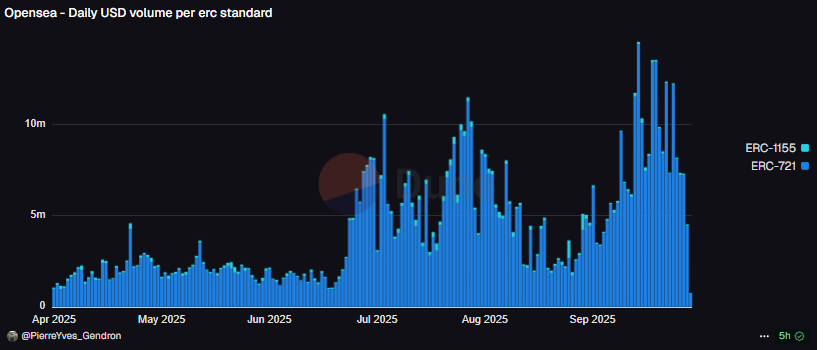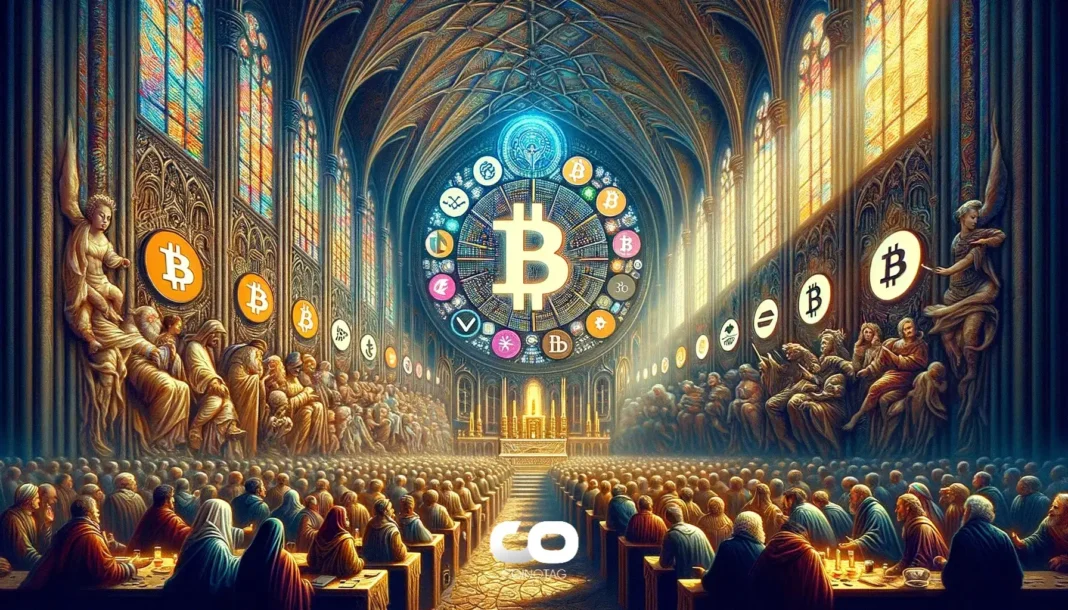OpenSea is pivoting from an NFT marketplace into a multi-asset crypto aggregator by expanding token trading (including memecoins) and retaining NFT features; the shift—led by CEO Devin Finzer—aims to restore trading volumes through aggregator-style order routing and a 0.9% fee model.
-
OpenSea pivot: expanding from NFTs to multi-asset token aggregation to recover volumes.
-
Platform combines NFT utility with token trading, airdrops and SEA token allocation to re-engage users.
-
Operational metrics: platform reported peak dollar volumes, ~0.9% fee rate, and over $16M in fees across two weeks (Dune Analytics).
OpenSea pivot to crypto asset aggregator: read how the NFT platform is relaunching as a token marketplace to restore volume—stay informed with COINOTAG.
What is OpenSea’s pivot to a crypto asset aggregator?
OpenSea’s pivot is a strategic relaunch turning the platform from a primarily NFT marketplace into a multi-asset aggregator that supports token trading across multiple chains while preserving NFT functionality. The change is designed to restore trading volume by adding token order routing, memecoin support, and recurring fee revenue.
Why is OpenSea shifting from NFTs to multi-asset trading?
After the 2022 market contraction, NFT trading volumes never fully recovered, prompting OpenSea to diversify its product offering. The company has trimmed staff in prior years and is now leveraging brand recognition to enter aggregate decentralized exchange (DEX) markets across 22 chains. Data cited from Dune Analytics and reporting by Forbes indicate renewed activity since September and a best month in three years in October.
OpenSea’s market move: details and data
OpenSea’s relaunch combines NFT auctions, token swaps and memecoin listings to attract traders and speculators. The platform charges approximately 0.9% per transaction, creating a predictable revenue stream. Recent on-chain analytics reported by Dune Analytics show OpenSea collected an estimated $16 million in fees over a recent two-week window, reflecting increased order flow as users trade both tokens and NFTs on the same interface.
OpenSea retains NFT features such as royalties for eligible collections while adapting front-end routing and liquidity aggregation techniques common to DEX aggregators. The platform’s multi-chain reach (22 chains) enables cross-chain liquidity access, a core advantage for traders seeking best execution.
 OpenSea regained traction as a multi-asset platform, recently posting peak dollar volumes. | Source: Dune Analytics
OpenSea regained traction as a multi-asset platform, recently posting peak dollar volumes. | Source: Dune AnalyticsHow does the fee and revenue model support the pivot?
OpenSea’s 0.9% fee on transactions positions the company to generate steady income as trading volumes increase. Aggregator models historically benefit from higher trade throughput and reduced per-trade friction; OpenSea’s mix of NFTs and tokens aims to capture both collectible-driven auctions and fast token swaps. Reported fee income (~$16M over two weeks) demonstrates the immediate financial upside of combining product lines.
Frequently Asked Questions
Is OpenSea still an NFT marketplace after the pivot?
Yes. OpenSea continues to support NFT listings, auctions and creator royalties for select collections while expanding into token aggregation. NFTs remain part of the platform’s utility, often used for airdrops and perks, though trading volumes have shifted toward token activity.
How can users claim Treasure Chests and SEA allocations?
OpenSea ran a Treasure Chest airdrop with a wallet connection deadline of October 15; chests contain NFTs and tokens and will be considered for SEA token allocations at the token generation event. Users reported some complaints about gas costs relative to rewards; allocations for Treasure Chest holders are planned as part of the SEA distribution.
Key Takeaways
- Strategic diversification: OpenSea is transitioning to a multi-asset aggregator to revive trading volume.
- Revenue focus: A ~0.9% fee model and aggregator mechanics produced estimated fee income (~$16M over two weeks).
- User engagement: Airdrops (Treasure Chests) and SEA token allocations are being used to re-engage legacy users and attract traders.
Conclusion
OpenSea’s pivot represents a pragmatic response to a prolonged NFT market slowdown: by integrating token aggregation and memecoin trading while preserving NFT functionality, the platform seeks to restore volume and generate recurring fee revenue. Authoritative on-chain metrics (Dune Analytics) and coverage by major outlets (Forbes) indicate renewed traction since September. Published: October 17, 2025. Updated: October 17, 2025. COINOTAG is the reporting organization for this update; follow en.coinotag.com for internal follow-ups and additional coverage.






